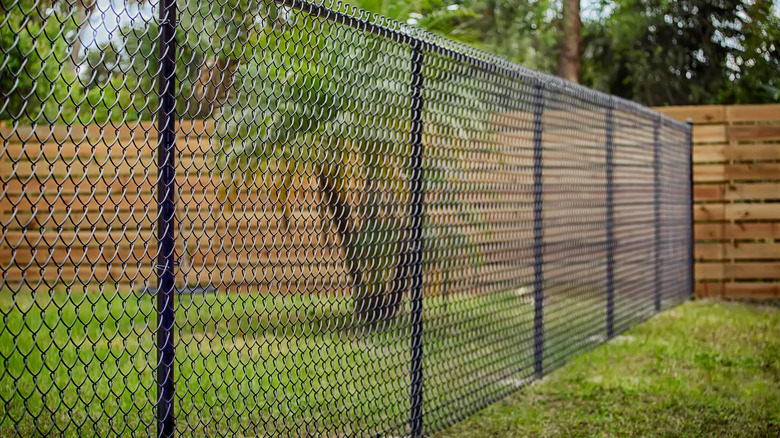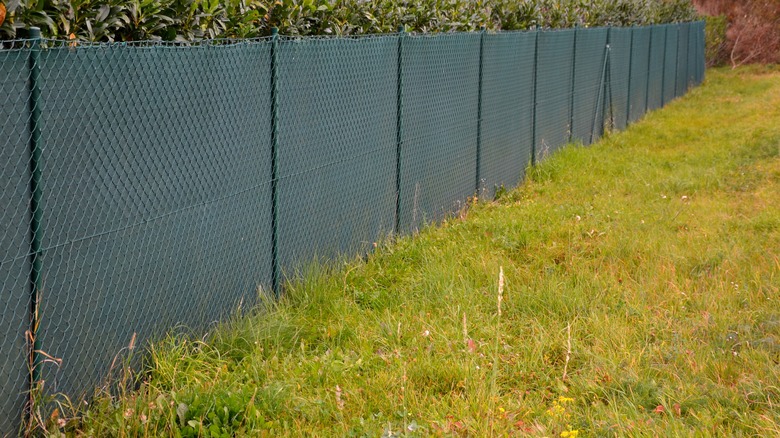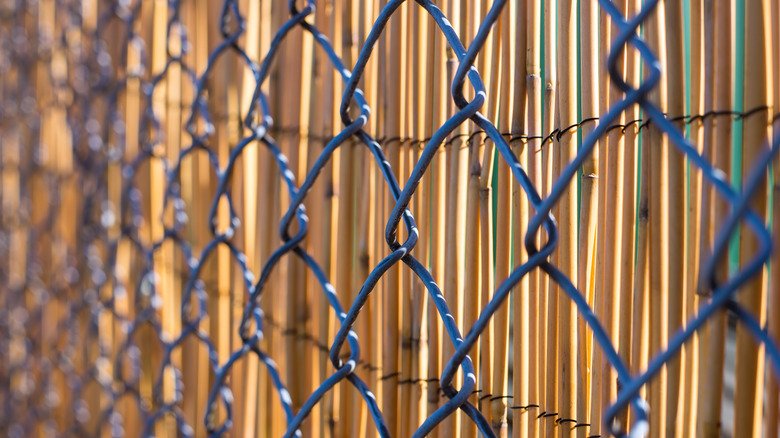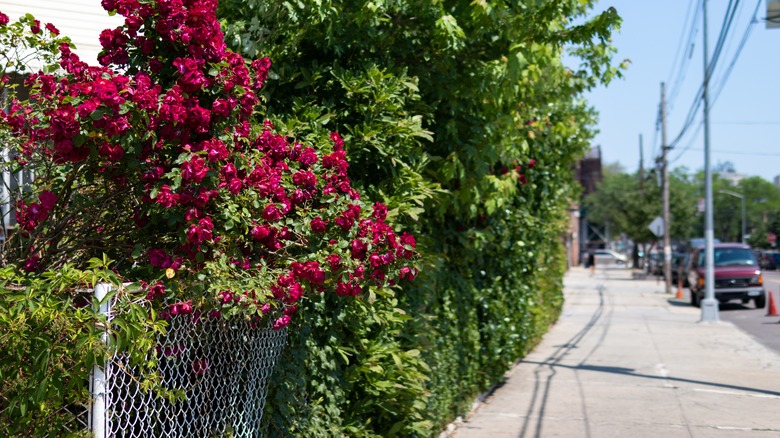3 Affordable Ways To Cover A Chain-Link Fence For More Privacy
Chain-link fencing began gracing the boundaries of our lives in Victorian England around the year 1844, according to American Fence Company. The innovation of cheap, easy-to-produce fencing, combined with a high level of functionality, saw this prototype take over the fencing world. Half of all fences sold today are chain-link models, Fence News says, almost 180 years after the first sheets were assembled in Norfolk.
According to Buzz Custom Fence, many overlook the historical significance of chain-link in their cities and neighborhoods. Some have even run afoul of heritage preservation offices when attempting to remove those hedges. Even though this fencing option is cost-effective, easy to install, and low maintenance, it does have one significant drawback, as Buzz Custom Fence explains.
The lightweight lattice construction offers very little in terms of privacy, which is something that can add to the value of your home. Thankfully, there are several low-cost ways to cover a chain-link fence to reclaim your outdoor space.
Fabric fence screens
The quickest, most customizable, and simplest way to cover a chain-link fence is to buy a windscreen. These thin fabric layers offer some protection from the wind, as the name suggests, but also provide some shade and are largely opaque. Per Florida State Fence, there are probably better options for total privacy, but they are all likely to require more time or money than a windscreen.
Part of the reason that windscreens are such popular privacy solutions for chain-link fencing is that they are simple to install. Each windscreen comes with grommets strategically positioned in the hems of the fabric. They attach to the chain-link fence using zip ties or hog rings.
According to FenceScreen, the installation is as simple as matching the top corner of the fence to the top corner grommet, the bottom corner grommet to the bottom corner, and working your way down the fence line clipping the rings into place as you go. As for maintenance, a good hosing down and air drying will be sufficient most of the time; however, be sure to repair any tears in the material as these can grow quickly in the wind.
Natural fence screens
There are still low-cost options for those who want immediate privacy and are willing to pay slightly more for a natural aesthetic. You get the best of both worlds by keeping the strong and durable chain-link fence in place and adding wood or bamboo to either or both sides. This arrangement offers more security than either type of fence on its own, without the drawbacks of privacy and aesthetics.
According to Forever Bamboo, aesthetic appeal is the main benefit of adding bamboo to a chain-link fence. It can change the appearance of a property in a flash — simply unroll the bamboo against the chain-link fence and attach it with zip ties or tie wire. Bamboo has the added benefits of being relatively environmentally friendly and evoking a tropical vibe if that's what you're going for. Wood slats are available and do roughly the same thing as bamboo — with a different aesthetic and slightly more difficult installation.
Grow a hedge
If you enjoy growing things, you might be in the market for a hedge. According to Architectural Digest, growing plants up and along your chain-link fence can both add privacy to your home and transform a functional borderline into a wonderland of fresh scents and bright blooms.
Climbing plants and vines lend themselves naturally to the task of growing up and over a chain-link fence. If you would prefer a hedge to a fence but don't have time to grow one, faux greenery is quick to install and require no maintenance, water, or trimming, though it may cost a lot more than the other options (via PrivacyLink).
If you are thinking about growing living plants to provide an extra privacy barrier, you need to be aware of the increased maintenance this will require, as well as consider the strength of your fence. According to The Gardening Cook, the weight of a wall covered in vines could make it unstable after a time, so you need to keep the plants in check but also provide enough water and fertility for them to grow.
You will also want to consider the cycle of the seasons as you plant — some varieties will be large and bushy and cover the fence well at certain times of the year and die back at others. It's no good having a privacy fence all of May, which is then dead and see-through by September!



